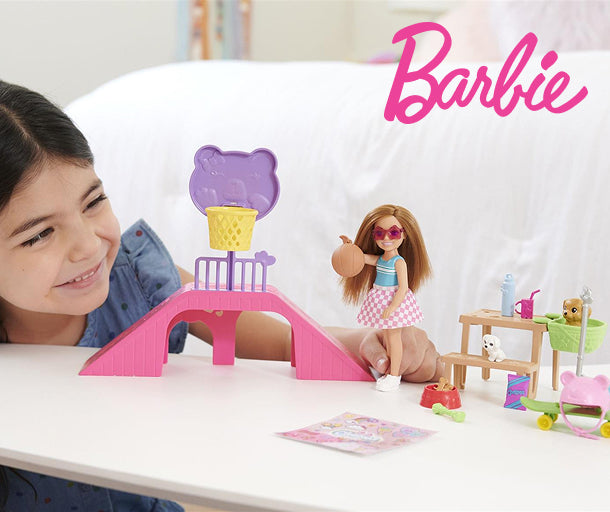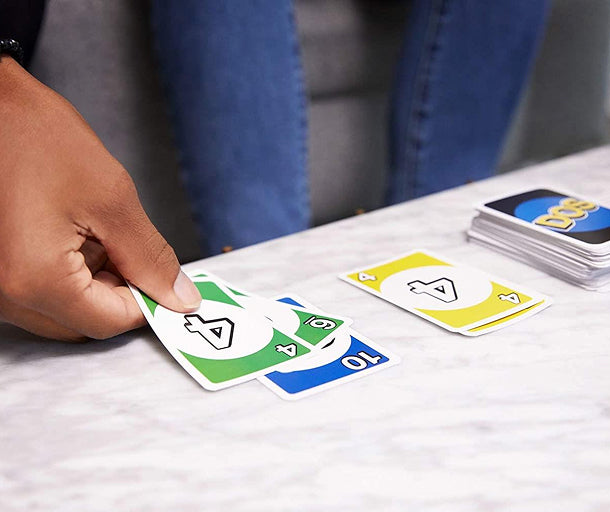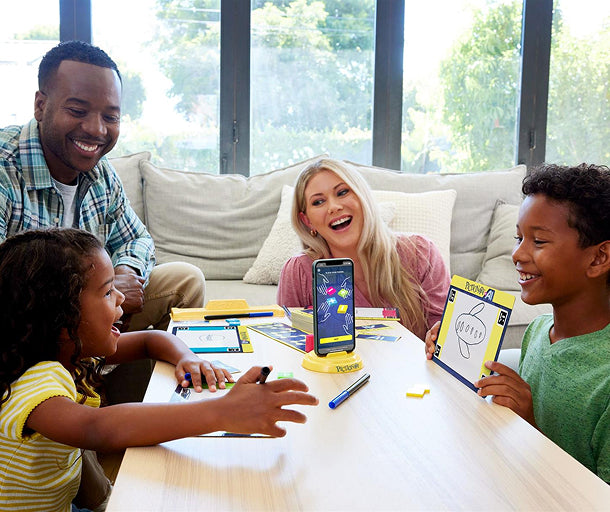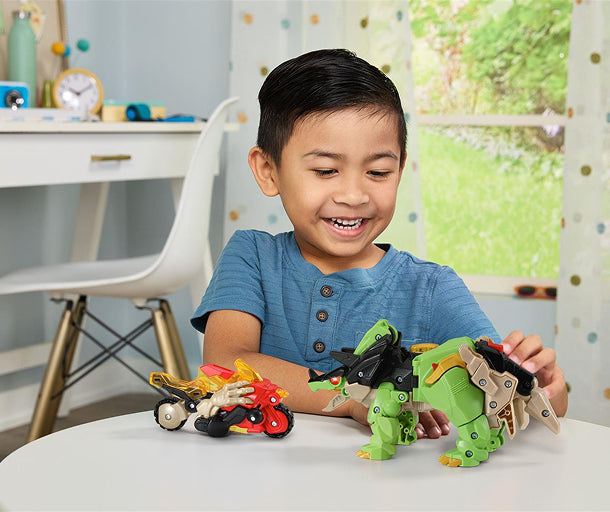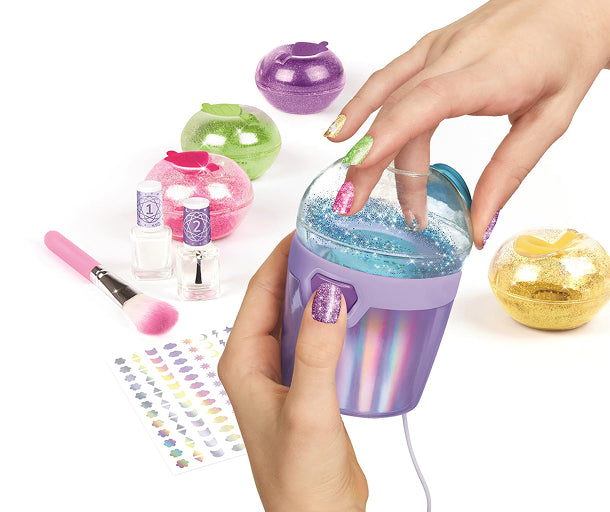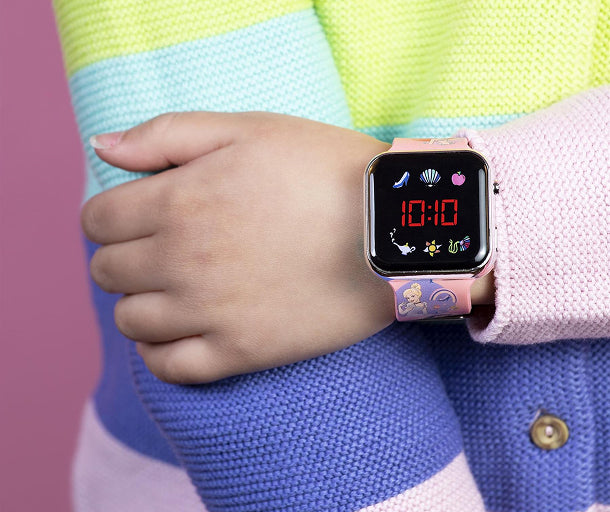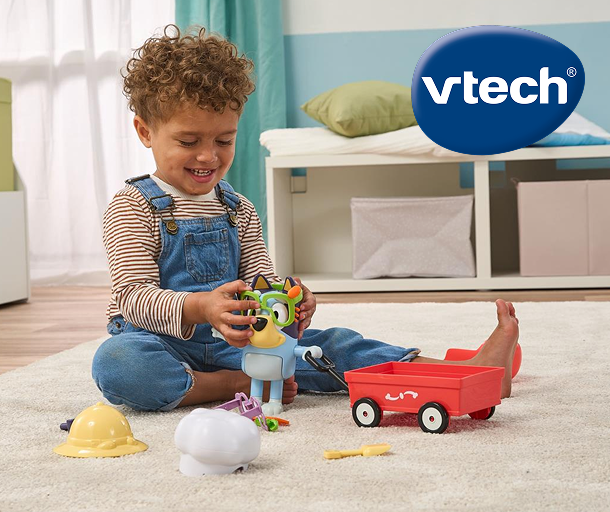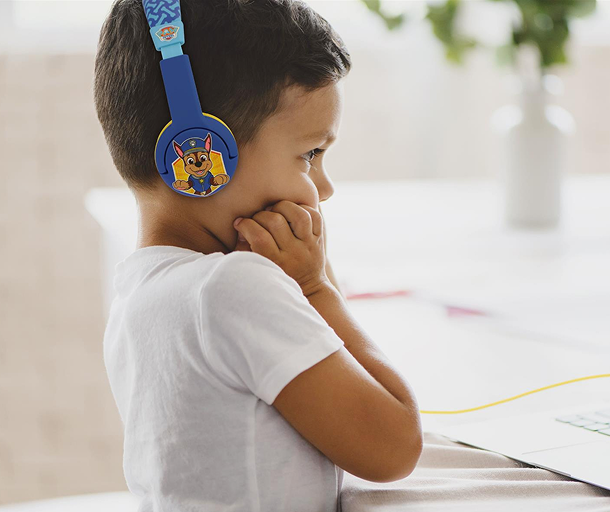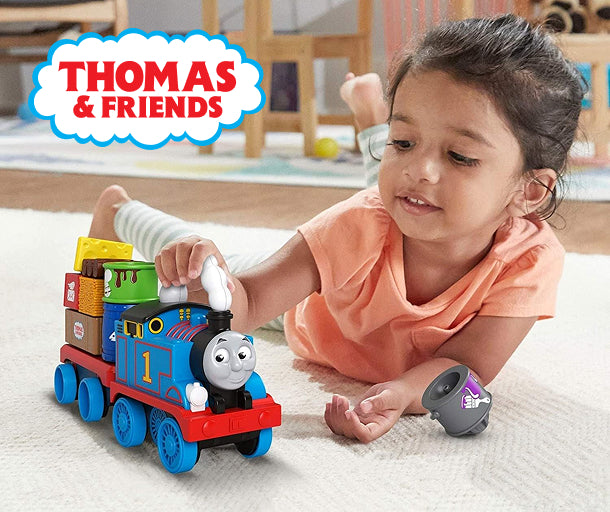When does screen time become too much for your kids?
Screens are a huge part of modern life and there is simply no avoiding them, especially for children. They are at home, school and even nurseries so many kids have grown up surrounded by screens. It is estimated that the average 3-4 year old spends around 3 hours a day in front of a screen!
It is no secret that screen time has been a massive help for parents when you are super-busy or needing to get work/chores done. Screens have saved the day keeping your child quiet while they watch a film on Disney+, or play games on their tablets. They also provide your child with fun learning activities that they can use for their education and be more immersed in learning.
But when does screen time become too much for your kids? And do you need to limit the screen time for them? Discover how much screen time is unhealthy for your child and the positives and negatives of screen time in our blog. Find useful tips to help you manage and limit their screen time too, to ensure your child gets a healthy balance of play.


How does screen time affect your child?
Screen time for kids does have its multiple benefits however, when your child has an excessive amount of screen time, it can lead to a few problems. The main problem is your child can have quite a few eye problems. They can get eye fatigue or near-sightedness, which can give them discomfort, dimness of vision and frequent headaches.
Too much screen time is also linked to obesity and diabetes as it encourages a lifestyle of sitting and not moving much. It is believed that excessive amounts of time looking at a screen can also affect your child’s sleep. Little ones who spend hours in front of a screen take longer to fall to sleep and experience a poor quality of sleep. This can slow down their development and make them struggle with paying attention during the day.
Does screen time affect your child’s behaviour & development?
Many children are very tech-savvy now and can often be quicker than adults when it comes to navigating technology. This is great for their futures and for their education, but if they have too much technology time, does it affect your child’s behaviour and development? Excessive amounts of screen time can negatively affect your child’s behaviour and development in a few ways.
They can have shorter attention-spans, often zoning in and out of conversations and even lessons. They struggle to focus on one thing for too long and jump to other things quickly, making it harder to retain important information and focus for long periods of time.
Kids who have too much time in front of a screen can often feel tired quicker too, which affects them to develop and grow as they are too tired to learn or take part in activities. Due to this, their motor skills can even be affected negatively from the touch screens. If they spend too much time touching screens they can’t strengthen, develop or manipulate their motor skills that other toys and tools can, as they require manual movement.
When does screen time become too much & how much screen time is needed?
To answer the difficult question of “when does screen time become too much?”, it all depends on your child’s age. There is no number set in stone as an unhealthy amount of time on screens due to ongoing research of the positives and negatives of screen time for kids. However, it is suggested for 2-5 year olds to only have one hour of screen time. Anything over this can be an excessive amount! For older children, aged 6-17 years old, generally no more than 2 hours of screen time is advised. If your child goes over 2 hours, they could be at risk of having too much screen time!
These guidelines of how much screen time for kids is needed before it becomes too much, can be flexible as long as you don’t permit too many hours of looking at a screen. The guidelines are generally for the hours spent with entertainment and play and doesn’t include any screen time for learning and homework.


The positives & negatives of screen time
There are multiple positives and negatives to screen time for kids that show parents all that is required is a healthy balance. Your child can benefit from screen time as well as pick up some negatives if they use a screen excessively.
Positives of screen time
- Your child can learn so much from using screens through the internet, fun educational games and educational activities. There is a plethora of knowledge on the internet your child can retain and explore.
- It can improve visual intelligence and hand-eye coordination.
- It can nurture social connections. Especially for a child who struggles to communicate or make friends.
- Technology can help them perform well academically.
- Games and activities can build vital skills such as creativity, puzzle-solving and teamwork.
Negatives of screen time
- Excessive screen time can affect sleeping due to the blue light screens emit.
- Screen activities can increase anxiety through central nervous system arousal.
- Kids can become inactive and spend too much time inside.
- There is a risk of danger with inappropriate websites, scams, misinformation and the ability to meet strangers online.
- Memory skills can decrease. Younger generations can often be more forgetful due to time spent with technology and a daily habit with screens.


How to manage your screen time for kids
So, how do you create the perfect balance of screen time for kids? How do you manage their screen time so they can reap the benefits and avoid any negatives? We have sourced and created some tips to manage your child’s screen time for you to try out and gain a healthy play balance, with screen time and non-screen time.
Create screen time rules
Set clear family rules for your child and everyone to follow about how best to use screens and technology. This will be followed to reduce any risks and so your child clearly knows how they should use technology.
This could be outlining the time spent on screens for entertainment and play and allowing extra time for learning. You could set a maximum of 2 hours a day of screen time for play and an extra hour for learning and homework.
If your child doesn’t listen, has a tantrum when they need to come off or refuses to stop, make sure to set repercussions in place. This could be taking away their favourite device for the entire day or a few days. Doing this helps your child to understand how they need to use technology and follow the rules so they don’t face losing their privileges for a day or even more!
Another great rule could be not allowing use of screens before bed as it can disrupt their sleep pattern, even for us adults. In the hours before bed, encourage playing with toys, reading, having a bath, going for an evening stroll to the park or playing board games instead. You could lock away all technology in these hours and keep it out of reach of your child.
Embrace screens
With the ever-changing technology of today, screens are never going to disappear. Because of this, it is ideal to see them as something positive, if your child doesn’t go overboard with using screens. Embrace screens and positive screen time to help your child with their education, have small amounts of time for fun and get connected with family and friends.
Keep in mind the positives of screen time but balance this with the amount of time your child spends with technology. Your child will always need to be in front of a screen for some time as modern life is centred around technology so, you can’t hide screens forever.
Start young
It is best to manage and limit screen time for kids when they are young. If you already have a teenager or pre-teen, it may be too late to set rules, boundaries and limits. Instead, you will have to focus on making their screen time as productive as possible and trying to help reduce the amount of time they spend on their devices. This is because time spent with technology will be ingrained in your older child as they have created a habit that is hard to break, just like many adults have.
With young children, you can reduce screen time and set rules for them to follow that they can learn easier, as they haven’t made a habit out of it yet. You can treat screens as any other activity where you will talk about it, engage with them while they are using screens and talk through the best uses of screen time and what you are monitoring. This can help them learn a healthy habit with technology. This includes not depending on it for hours on end, but knowing how to use it effectively and knowing a good amount of time to spend with screens for entertainment purposes.
Create non-screen family activities for your young child for them to easily want to give their screens up. This will help with creating a healthy balanced screen time that they can make a habit of for now and into their future.
Store technology in an unreachable place
Following your rules and screen time schedule that you can create, store any of your child’s technology in an unreachable place when they shouldn’t use it. This could be in a box on a high shelf or in a draw in your room that they can’t get to. This hidden place should be used for the majority of the day, only coming out when they can have screen time for play and for education.
Doing this frees your child from the temptation of technology as they can’t see their devices. They are more likely to do other activities if they know they can’t access their technology yet. Plus, if they crack on with other fun activities, they can feel rewarded when it’s time to use their screens!
Use parental controls
When your child is having their healthy dose of screen time, it is vital to set up parental controls on their devices. Doing this can help prevent your child from encountering any dangers or threats such as malicious people, scams and dodgy websites. Parental controls give your child the freedom to do what they please on their device while keeping them safe online.
It is vital to talk through the dangers of the internet and social media with your child so they can also understand why they must be protected. Doing this can help them feel more safe. They will feel comfortable talking to you about any dangers and sharing their passwords for accounts, so you can monitor what they are doing.
Through parental controls, not only can you stop your child from going on dodgy and inappropriate sites, but you can also limit their screen time on their device. This means you can have the device stop and shut down at certain times and after a certain amount of time has passed. Having this forces your child to find other activities to do and helps keep the safe from any dangers, as well as dangers that can occur from excessive screen time.
Schedule screen time
Create a schedule for your child’s screen time that they can make into a healthy habit. Encourage them to follow the screen time schedule daily to create a routine that they can soon fall into easily.
In your schedule, plan for recreational screen time, which can be up to one to two hours per day. Break this screen time into small chunks at peak times in the day your child will want to play with their devices. During the week, this could be 15 minutes in the morning before school, 30-40 minutes before you eat and around 30-40 minutes right after food, to wind down with a programme. At the weekend it could be similar but in shorter chunks to spread out across the day if you wish.
Make sure that any recreational screen time ends around 6:30-7:30pm, depending on your child’s age and bedtime, to ensure they do other activities to help them sleep.
Once screen time for entertainment is planned, slot an hour or so of screen time for any homework or learning your child can benefit from. This could be broken into two 30 minute sessions, with a break in-between to get a rest from the screen.
Now your schedule is created, display it in an area your child will take notice of. This could be in the living room where they use their devices the most, or the kitchen.
Encourage playing with toys or outdoor play
Screen time for kids often means staying indoors, which is not healthy for any child. Encourage other play activities and outdoor play to get your child much-needed fresh air, as well as a break from screens. Have a fun outdoor play apparatus, such as a swing set or playhouse, to entice your child to head outside. Set up fun games such as football, tennis, an obstacle course and even encouraging a bike ride to make the outdoors seem more exciting than their screens.
If the weather is terrible for some outdoor fun, entice your child to play with other toys. Great alternatives to screens are:
- Board games - These bring exciting family fun and are great for your child’s brains too. They help to stimulate the parts of the brain that aid with patience, memory, strategy and creativity!
- Reading - A relaxing and soothing way to engage with entertainment and stories. Fiction, fact books and even magazines are a great way to keep your child entertained with no screens.
- Crafts - Creating something is not only buckets of fun, but it’s great for boosting imagination and creativity. Your child can have a sense of achievement and can experiment while crafting. Slime kits are brilliant to use for crafting to create new, unique crafts with a calming sensory experience.
- Building - Taking part in constructive play nurtures your child’s creativity and develops motor-skills and problem-solving skills. Plus, it provides them with endless fun for hours on end!
Lead by example
Your child often learns by observing so, they can easily copy and learn your behaviours. Due to this, it is ideal to lead by example when it comes to screen time. Try to reduce your recreational screen time and find other activities to do, that can be done with your child.
If they see you constantly on your phone or device, your child will easily reflect this themselves and carry out your bad screen time habits. If you are addicted to technology, so will your child and they can create a technology dependency.
Think about how you use your screen time and what you can do to reduce this. This could be setting a rule for yourself to not scroll on your phone at the dinner table or not looking at technology before bed. This shows your child a good example to follow and also benefits you, as you aren’t staring at a screen for the majority of hours during the day. You could even start to create a healthy technology habit for yourself that your child can copy and, you may even notice, there’s more opportunity to have some family fun instead.
Follow our guidelines for managing screen time and implement them gradually to help your child learn healthy technology habits. Find a perfect balance of screen time and non-screen time to reduce any risks of excessive technology use while finding useful ways to spend time online.
Screens aren’t bad for your child as they open up a whole new plethora of education they can learn from. They can only be bad if your child is glued to a screen all day and not using it for education at all. Try this journey to a healthy screen time balance with your child too, to lead by example and benefit yourself!
Follow our guidelines for managing screen time and implement them gradually to help your child learn healthy technology habits. Find a perfect balance of screen time and non-screen time to reduce any risks of excessive technology use while finding useful ways to spend time online.
Screens aren’t bad for your child as they open up a whole new plethora of education they can learn from. They can only be bad if your child is glued to a screen all day and not using it for education at all. Try this journey to a healthy screen time balance with your child too, to lead by example and benefit yourself!



